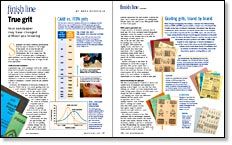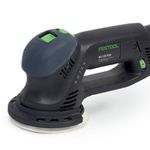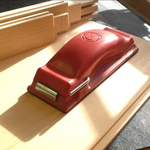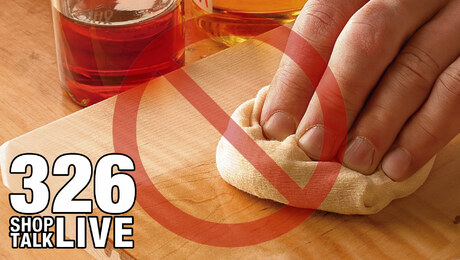
Synopsis: The world of sandpaper grits is undergoing a quiet revolution, and the grits you’ve always relied on for each stage of woodworking may no longer be the most appropriate, and the CAMI scale developed in the U.S. has increasingly been replaced by the European-based FEPA scale. In charts and text, associate editor Mark Schofield highlights the differences and offers advice on selecting the right grit for the task at hand. A helpful sidebar gives an overview of the systems used by major sandpaper manufacturers.
Sandpaper has many confusing specifications, from the type of abrasive to the weight of the paper, but at least the grit size has always been easy to understand. Unfortunately, this is no longer true: The world of sandpaper grits is undergoing a quiet revolution, and the grits you’ve always relied on for each stage of woodworking may no longer be the most appropriate.
CAMI once was dominant
A generation ago, most sandpaper sold in the United States had its abrasive size graded on a scale developed by the Coated Abrasives Manufacturers’ Institute (CAMI) and approved by the American National Standards Institute (ANSI). This standard was so common that reference to it was not even included on the back of a sheet of sandpaper; it simply stated the grit number: 180, 220, etc.
In Europe, the Federation of European Producers of Abrasives (FEPA) had its own metric grading scale, but to avoid confusion, FEPA-graded paper carried the prefix P with the grit number: P180, P220, etc. Not only was the distinction clear, but FEPA sandpaper sold in the United States also was confined largely to that made by European companies such as Klingspor and Mirka. Having two grading methods would be of only academic interest if the same numbered papers produced the same results.
Unfortunately, the finer the grits become, the more the two grading systems diverge (see the chart at right). Below 220 grit, the size of the abrasive particles represented by each number is almost the same. But to match the abrasive on CAMI-graded 600-grit paper, you need to use FEPA-graded P1000 or even P1200 paper.
FEPA papers gain wider use
A large producer of abrasives estimates that 10 years ago 50% of its customers used FEPA-graded sandpaper; today, the number is around 90%. The reason for the increase has to do with the advantages of FEPA papers. For one, in the grit sizes most used for sanding bare wood (80 to 150 grit), FEPA papers are slightly coarser and tend to cut more quickly than their CAMI equivalents. This is appealing to production shops where time is money; the slightly coarser scratch pattern left by FEPA sandpaper is of less importance.
Another advantage is that while all sandpaper is coated with a range of grit sizes, FEPA-graded papers have a greater percentage of particles close in size to the stated grit. Because of this, the scratch pattern left by FEPA sandpaper tends to be more uniform, an important characteristic as you begin to work in finer grits.
From Fine Woodworking #176
For the full article, download the PDF below:
Fine Woodworking Recommended Products

Festool Rotex FEQ-Plus Random Orbital Sander

Bahco 6-Inch Card Scraper

Preppin' Weapon























Log in or create an account to post a comment.
Sign up Log in